Medieval History
As part of my interviews for this blog, I asked my friend Elliott who is currently working on his doctorate. When it comes to medieval art (or art history in general) I don't think I've met anyone with a greater passion. As you will see, he is eloquent and interesting, and will make a spectacular professor someday. For more of Elliott's writing and photographs, visit his blog chronicling his travels abroad!
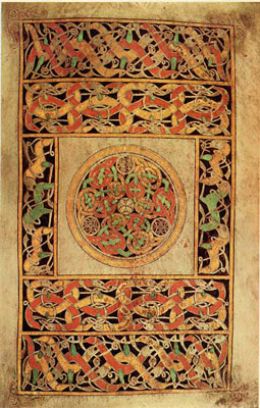

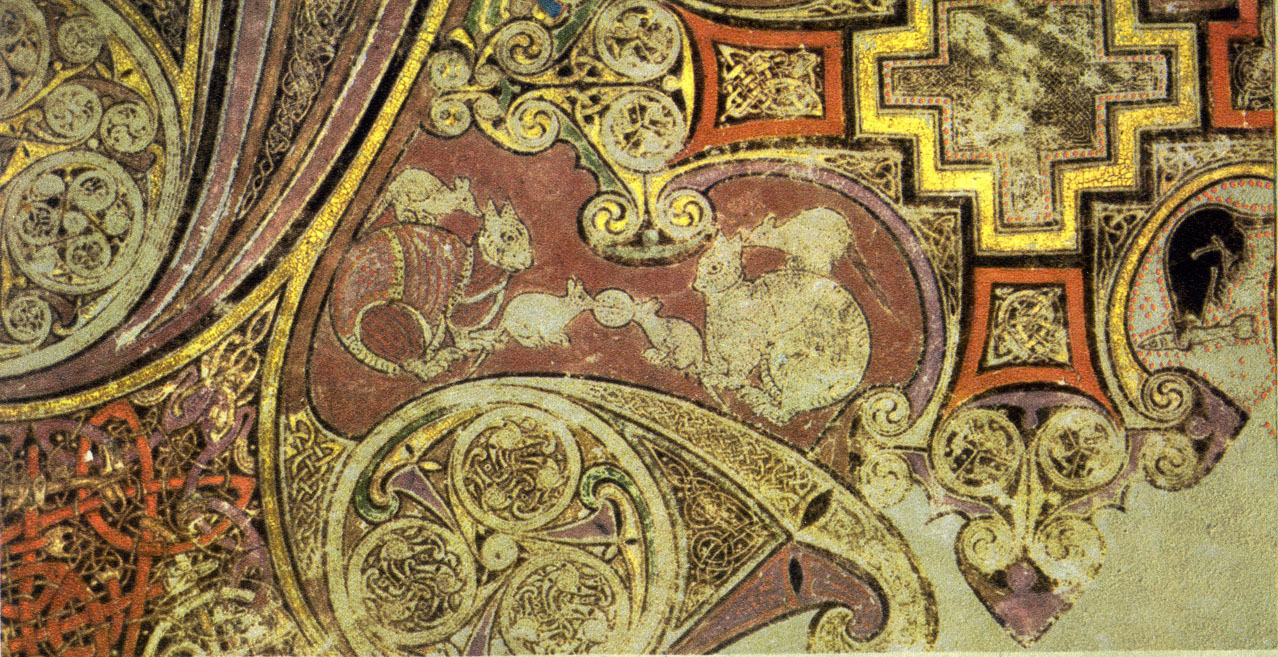 So many different artistic styles flourished during the centuries that we call the "Middle Ages." There are certainly some periods that speak to me more than others. I love the reverence and grace of Byzantine icons with generations of theology encoded in their shapes and colors. The melding of that gilded, otherworldly style with thirteenth- and fourteenth-century Italian art produced some of the most beautifully executed panel paintings in Europe. It is difficult to rival the rich colors and microscopic ornaments of Hiberno-Saxon manuscripts, and I particularly love the final centuries of the Middle Ages with their noble Throne of Wisdom sculptures, fragile glass narratives suspended in stone tracery, and wrenching images of the suffering Christ and mourning Madonna. Whatever the period, though, I am consistently drawn to the moving expressions of faith and devotion that are at the heart of so much of medieval art.
So many different artistic styles flourished during the centuries that we call the "Middle Ages." There are certainly some periods that speak to me more than others. I love the reverence and grace of Byzantine icons with generations of theology encoded in their shapes and colors. The melding of that gilded, otherworldly style with thirteenth- and fourteenth-century Italian art produced some of the most beautifully executed panel paintings in Europe. It is difficult to rival the rich colors and microscopic ornaments of Hiberno-Saxon manuscripts, and I particularly love the final centuries of the Middle Ages with their noble Throne of Wisdom sculptures, fragile glass narratives suspended in stone tracery, and wrenching images of the suffering Christ and mourning Madonna. Whatever the period, though, I am consistently drawn to the moving expressions of faith and devotion that are at the heart of so much of medieval art.
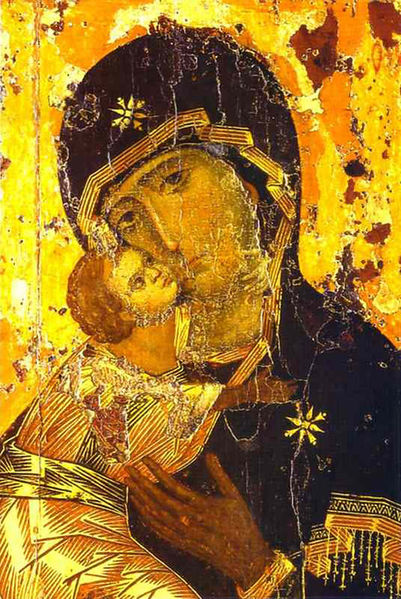 It's too hard to choose a favorite work of art from the Middle Ages! However, I have always loved the icon of the Vladimir Virgin and Child, which probably dates to the eleventh or twelfth century. In the painting, the Christ Child, who is dressed in a red-orange tunic shimmering with gold, seems to float in the arms of his mother. The Virgin Mary wears a dark mantle and looks mournfully at the viewer with large, pained eyes, foreseeing the suffering and death of her tiny Son. As if to comfort his mother, Christ embraces her and rests his face against hers. Beyond its poignant depiction of love between Mother and Child, this panel also has a fascinating history. It was first housed in Kiev, Ukraine, but shortly afterward it made its way to Russia. Orthodox Christians attribute miraculous properties to the icon and credit it with saving the Russian people from invasions.
It's too hard to choose a favorite work of art from the Middle Ages! However, I have always loved the icon of the Vladimir Virgin and Child, which probably dates to the eleventh or twelfth century. In the painting, the Christ Child, who is dressed in a red-orange tunic shimmering with gold, seems to float in the arms of his mother. The Virgin Mary wears a dark mantle and looks mournfully at the viewer with large, pained eyes, foreseeing the suffering and death of her tiny Son. As if to comfort his mother, Christ embraces her and rests his face against hers. Beyond its poignant depiction of love between Mother and Child, this panel also has a fascinating history. It was first housed in Kiev, Ukraine, but shortly afterward it made its way to Russia. Orthodox Christians attribute miraculous properties to the icon and credit it with saving the Russian people from invasions.
 I am fascinated by the way art functions in religious practice. Images of the saints painted on panels, brushed onto vellum pages, or etched into gold reliquaries are one of the primary manifestations of medieval spirituality. The cult of the saints began in the Early Christian period with a heavy focus on tombs and bones. Hundreds of years later, relics continued to occupy a place of special prominence when St. Louis IX, king of France, constructed Sainte-Chapelle, with its iridescent walls of colored glass, to enclose newly acquired relics from Christ's Crucifixion. Particularly valuable relics were sometimes even stolen. In furta sacra, or "sacred theft," bones of the saints were secretly transported from one shrine to another, often with the explanation that the saints had commanded the burglars to remove their bones. The cult of the Virgin Mary, which started to gain momentous popularity during the eleventh and twelfth centuries, offers an interesting contrast to relic-based devotion to saints. Legend said that the mother of Christ had risen bodily to heaven after her death so that she, like her Son, had very few relics remaining on earth, with the exception of locks of hair or clothing. Shrines to the Virgin Mary often safeguarded a miraculous statue or painting in place of a tomb or reliquary. By the later Middle Ages, the cult of relics was challenged by another fervent form of religiosity?devotion to the Body of Christ in the Sacrament.
I am fascinated by the way art functions in religious practice. Images of the saints painted on panels, brushed onto vellum pages, or etched into gold reliquaries are one of the primary manifestations of medieval spirituality. The cult of the saints began in the Early Christian period with a heavy focus on tombs and bones. Hundreds of years later, relics continued to occupy a place of special prominence when St. Louis IX, king of France, constructed Sainte-Chapelle, with its iridescent walls of colored glass, to enclose newly acquired relics from Christ's Crucifixion. Particularly valuable relics were sometimes even stolen. In furta sacra, or "sacred theft," bones of the saints were secretly transported from one shrine to another, often with the explanation that the saints had commanded the burglars to remove their bones. The cult of the Virgin Mary, which started to gain momentous popularity during the eleventh and twelfth centuries, offers an interesting contrast to relic-based devotion to saints. Legend said that the mother of Christ had risen bodily to heaven after her death so that she, like her Son, had very few relics remaining on earth, with the exception of locks of hair or clothing. Shrines to the Virgin Mary often safeguarded a miraculous statue or painting in place of a tomb or reliquary. By the later Middle Ages, the cult of relics was challenged by another fervent form of religiosity?devotion to the Body of Christ in the Sacrament.
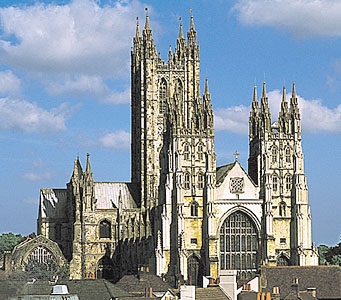

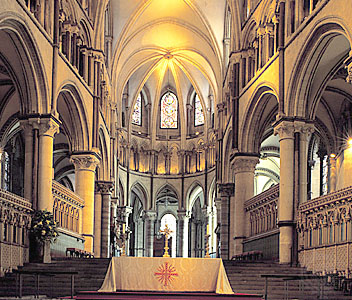 One of the most remarkable medieval sites I have visited is Canterbury Cathedral. The cathedral has long been an important bishopric, and today members of the Anglican Communion looks to the Archbishop of Canterbury as their chief spiritual leader. During the Middle Ages, the cathedral was a renowned destinations for pilgrims who came seeking miracles at the tomb of St. Thomas Becket, the archbishop martyred in 1170 by the king's soldiers. Visitors today can still follow the medieval pilgrim's itinerary through the cathedral, beginning at the side altar where St. Thomas was attacked and continuing down into the crypt where his body was entombed for several decades after his death. Back on the main level of the church, you can ascend the stairs to Trinity Chapel, where the martyr's relics were moved in 1220. Tragically, King Henry VIII destroyed the ornate reliquary enshrining the bones, and a single candle now marks the spot where St. Thomas once lay. The stone steps leading to Trinity Chapel are warped from centuries of pilgrims climbing up and down them, and the narratives in the stained glass bring to life the visits of the sick and mentally diseased. I stood right next to the windows and was amazed at how uneven the surface of the glass was?almost like waves. At the back of Trinity Chapel is the Corona sanctuary, where a fragment of St. Thomas's skull was once kept.
One of the most remarkable medieval sites I have visited is Canterbury Cathedral. The cathedral has long been an important bishopric, and today members of the Anglican Communion looks to the Archbishop of Canterbury as their chief spiritual leader. During the Middle Ages, the cathedral was a renowned destinations for pilgrims who came seeking miracles at the tomb of St. Thomas Becket, the archbishop martyred in 1170 by the king's soldiers. Visitors today can still follow the medieval pilgrim's itinerary through the cathedral, beginning at the side altar where St. Thomas was attacked and continuing down into the crypt where his body was entombed for several decades after his death. Back on the main level of the church, you can ascend the stairs to Trinity Chapel, where the martyr's relics were moved in 1220. Tragically, King Henry VIII destroyed the ornate reliquary enshrining the bones, and a single candle now marks the spot where St. Thomas once lay. The stone steps leading to Trinity Chapel are warped from centuries of pilgrims climbing up and down them, and the narratives in the stained glass bring to life the visits of the sick and mentally diseased. I stood right next to the windows and was amazed at how uneven the surface of the glass was?almost like waves. At the back of Trinity Chapel is the Corona sanctuary, where a fragment of St. Thomas's skull was once kept.

- Black Friday Pilgrims
Pilgrims at St. Edwards' TombI'm sketching out a short essay for Literature Compass on teaching things medieval in the modern world, specifically on teaching a culture of (medieval) belief within a culture of (modern) secularity. I'll...
- Protest!
In the Middle Ages, when you were mad at God (which happened), you would take your frustration out on His representatives, the saints. There is an entire set of stories involving the Humiliations of the Saints: statues overturned, rituals denied,...
- Lenten Array 2011
The ancient western custom of covering altars and images with Lenten array and Lenten veils has been covered on this blog a number of times. If you want to know more about the custom and its purpose look at the article here and...
- Some News Of Recent Work At Windrush In Gloucestershire
I was pleased to receive the following photographs from Fr David Ackerman, rector of Windrush in Gloucestershire. It is worth repeating Fr Ackerman's message in full: "I thought you might be interested in seeing the attached...
- Some Thoughts On Our Lady Of London
One of my favourite images of Our Lady is the poster 'Our Lady of London' which was designed in 1935 by Martin Travers. I took this photo of it from a surviving copy hanging in a Nottinghamshire church. Our Lady has twelve stars around her...
Medieval History
Interviews, Part II
As part of my interviews for this blog, I asked my friend Elliott who is currently working on his doctorate. When it comes to medieval art (or art history in general) I don't think I've met anyone with a greater passion. As you will see, he is eloquent and interesting, and will make a spectacular professor someday. For more of Elliott's writing and photographs, visit his blog chronicling his travels abroad!
- What draws you to medieval art?



- What do you wish the general public knew about your area of expertise?
- Do you have any favorite online art or historical resources?
- Your favorite (if you can pick one) artwork from the Middle Ages:

- What area of study in medieval art history do you find the most intriguing?

- In your travels, do you have a specific place (cathedral, city square, museum) that you felt the most 'in touch' with the Middle Ages?




- Black Friday Pilgrims
Pilgrims at St. Edwards' TombI'm sketching out a short essay for Literature Compass on teaching things medieval in the modern world, specifically on teaching a culture of (medieval) belief within a culture of (modern) secularity. I'll...
- Protest!
In the Middle Ages, when you were mad at God (which happened), you would take your frustration out on His representatives, the saints. There is an entire set of stories involving the Humiliations of the Saints: statues overturned, rituals denied,...
- Lenten Array 2011
The ancient western custom of covering altars and images with Lenten array and Lenten veils has been covered on this blog a number of times. If you want to know more about the custom and its purpose look at the article here and...
- Some News Of Recent Work At Windrush In Gloucestershire
I was pleased to receive the following photographs from Fr David Ackerman, rector of Windrush in Gloucestershire. It is worth repeating Fr Ackerman's message in full: "I thought you might be interested in seeing the attached...
- Some Thoughts On Our Lady Of London
One of my favourite images of Our Lady is the poster 'Our Lady of London' which was designed in 1935 by Martin Travers. I took this photo of it from a surviving copy hanging in a Nottinghamshire church. Our Lady has twelve stars around her...
